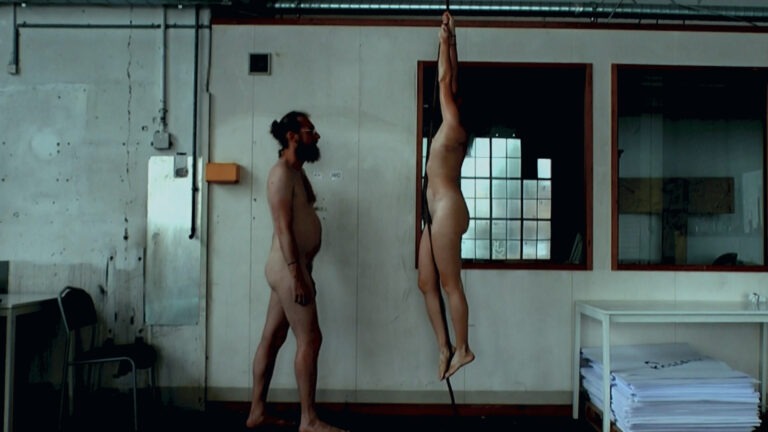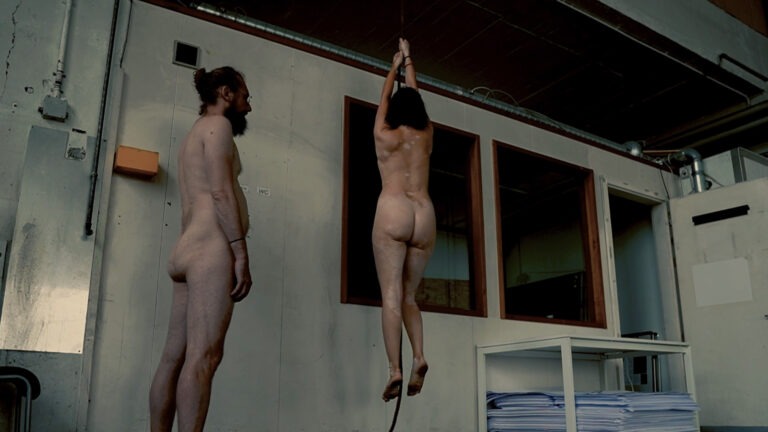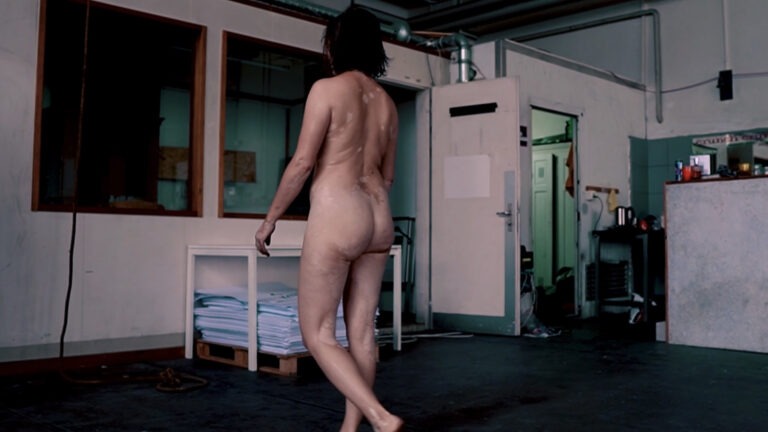Splash (2022)
Altes Busdepot Halle F, Tösstalstrasse 86, Winterthur (Kunst im Depot) 14/08/2022
Concept and direction: Belinda
Context: Dreamworld 360° – Artist in Residence Program by Elias Kirsche (2022)
Performance: Belinda, Marc Lüthi
Camera: Philemon Mukarno
Splash Unveiling the Depths and Essence
On August 14, 2022, the industrial space of Altes Busdepot Halle F in Winterthur came alive with Splash, a daring naked performance that explored the intersection of body, water, and emotional transformation. Conceived and directed by Belinda, with Marc Lüthi as co-performer and Philemon Mukarno as camera artist, the piece formed part of the “Dreamworld 360° – Artist in Residence Program” curated by Elias Kirsche.
Through the union of motion and vulnerability, Splash invited viewers into a space where fragility became a catalyst for renewal.
The Venue: Industrial Rawness Meets Human Fragility
Altes Busdepot Halle F, known as Kunst im Depot, is a space devoted to experimental and transdisciplinary art. Its raw, industrial setting created an arresting backdrop for Splash, amplifying the tension between the natural and the constructed, the fluid and the rigid.
Against concrete walls, the naked body and shimmering water formed a living sculpture. This setting emphasized the performance’s themes of exposure, transformation, and rebirth—turning the venue itself into an active participant within the artistic dialogue.
Dreamworld 360°: A Residency of Radical Openness
Splash was not a standalone piece but part of Dreamworld 360°, a curated program centered on body-conscious art and the raw language of nudity. Curator Elias Kirsche, known for his explorations of corporeal presence in projects such as “EROS 24/7” and “Naked Slow Walk Zagreb,” framed Splash within a continuum of performances challenging cultural narratives about nakedness, empathy, and collective experience.
The residency’s vision nurtured intimate creative collaborations between artists who share a deep interest in exploring the vulnerable body as a site of truth and transformation.
Body, Water, and the Threshold of Renewal
At the heart of Splash lies the dialogue between body and water. The performance traces a symbolic journey through near-drowning and rescue—an evocative metaphor for surrender, crisis, and rebirth.
Water appeared as both danger and salvation: a force that overwhelms yet cleanses. The nude figure, exposed and suspended between immersion and emergence, embodied humanity’s ongoing struggle to survive and evolve through vulnerability.
This moment of rescue transformed the act of saving into an intimate gesture of trust and human connection, dissolving boundaries between performer and witness.
The Naked Body as Sacred Expression
In Splash, nudity transcended display. It became the medium of truth, representing humanity stripped of defenses. Within contemporary performance art, the naked body is a vessel of authenticity—an act of courage that challenges spectators to confront discomfort and empathy alike.
This approach aligns with a lineage of performance practices that reject objectification and reframe nudity as liberation. Rather than provoking, it reveals: a shedding of social constructs and an acknowledgment of shared human essence.
Collaboration as Creative Alchemy
Marc Lüthi’s presence as co-performer and Philemon Mukarno’s gaze as camera artist created a balanced triangulation of movement, perception, and memory. Mukarno, known for his mastery in both performance art and music composition, translated live vulnerability into a lasting visual resonance.
Their collaboration blurred distinctions between stage and documentation, transforming the camera into an extension of consciousness—a second witness participating in the act of transformation.
Winterthur’s Pulse: Context and Continuum
Winterthur’s vibrant art scene, reflected in events like Kulturnacht Winterthur, provided fertile ground for the unveiling of Splash. The performance’s presence within this landscape underscored the city’s dedication to experimental, transdisciplinary work that dissolves boundaries between performer and public.
Even beyond a specific festival context, Splash belonged to Winterthur’s ongoing narrative of artistic risk-taking and embodied exploration.
Human Vulnerability as Art’s Core
Ultimately, Splash explored themes that transcend its immediate performance: the fear of dissolution, the beauty of surrender, and the transformative power of care. Through nakedness and water, it reflected the eternal rhythm of destruction and renewal—inviting audiences to breathe, feel, and remember their own fragile vitality.
In a world that often hides from vulnerability, Splash dared to celebrate it, reminding us that rebirth begins the moment we let ourselves be seen.





